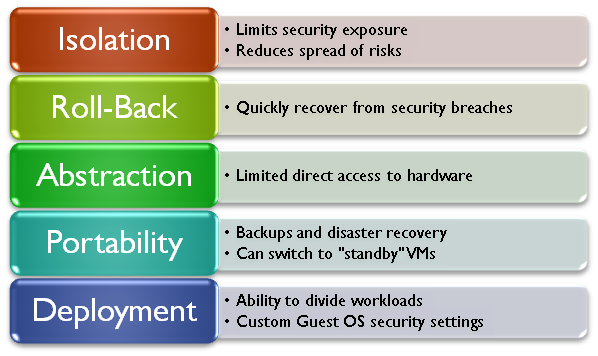Explain The Benefits Of Virtualization In Brief.

Virtualization is the new technique which has made the computing easier. Can anyone explain me the exact benefits of virtualization in short?


Virtualization is the new technique which has made the computing easier. Can anyone explain me the exact benefits of virtualization in short?


The virtual edition of the Os, storage devices, servers, etc. can be created with the help of the Virtualization technique. There are benefits to it. Framework divides the workload that can be executed in many environments. It helps to reduce the costs, makes the backup and recovery process less tedious, helps in smooth operations, and so on. It has created a benchmark in IT technology which has prompted this sector to move forward with higher resources.



Virtualization, by definition, is the process of creating a software-based or virtual representation of something like virtual applications, servers, networks, and storage. It is one of the most effective ways of reducing IT expenses while boosting efficiency and agility for all size businesses. Among the benefits of virtualization include:
Because of the limitations of x86 or 32-bit servers, numerous IT organizations need to deploy multiple servers where every server operates at a fraction of their capacity to keep pace with today’s high processing and storage demands. The results of these are excessive operating costs and huge inefficiencies. Virtualization depends on software to simulate hardware functionality and create a virtual computer system.
This allows IT organizations to run multiple virtual systems and multiple operating systems and applications on a single server.
